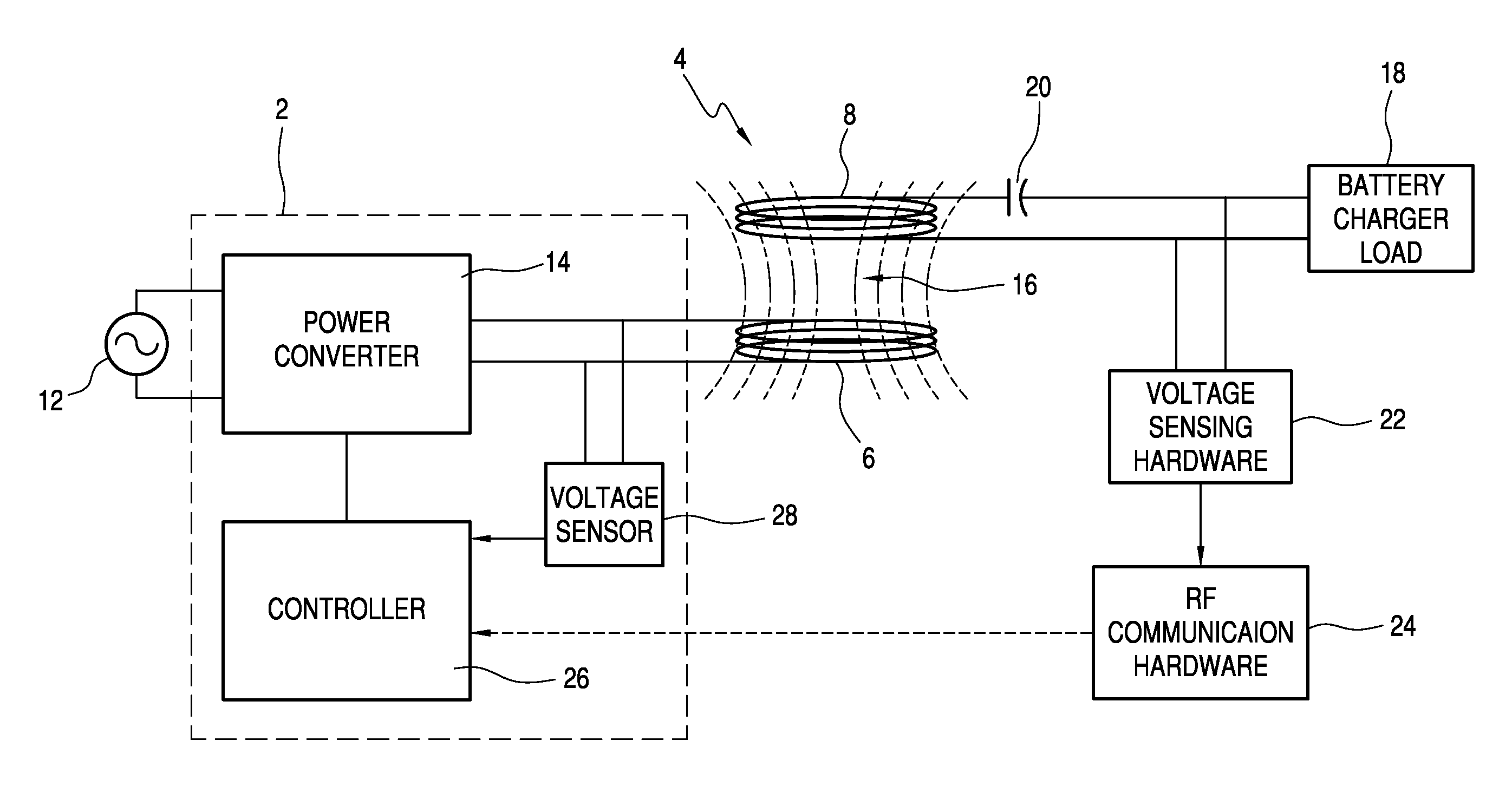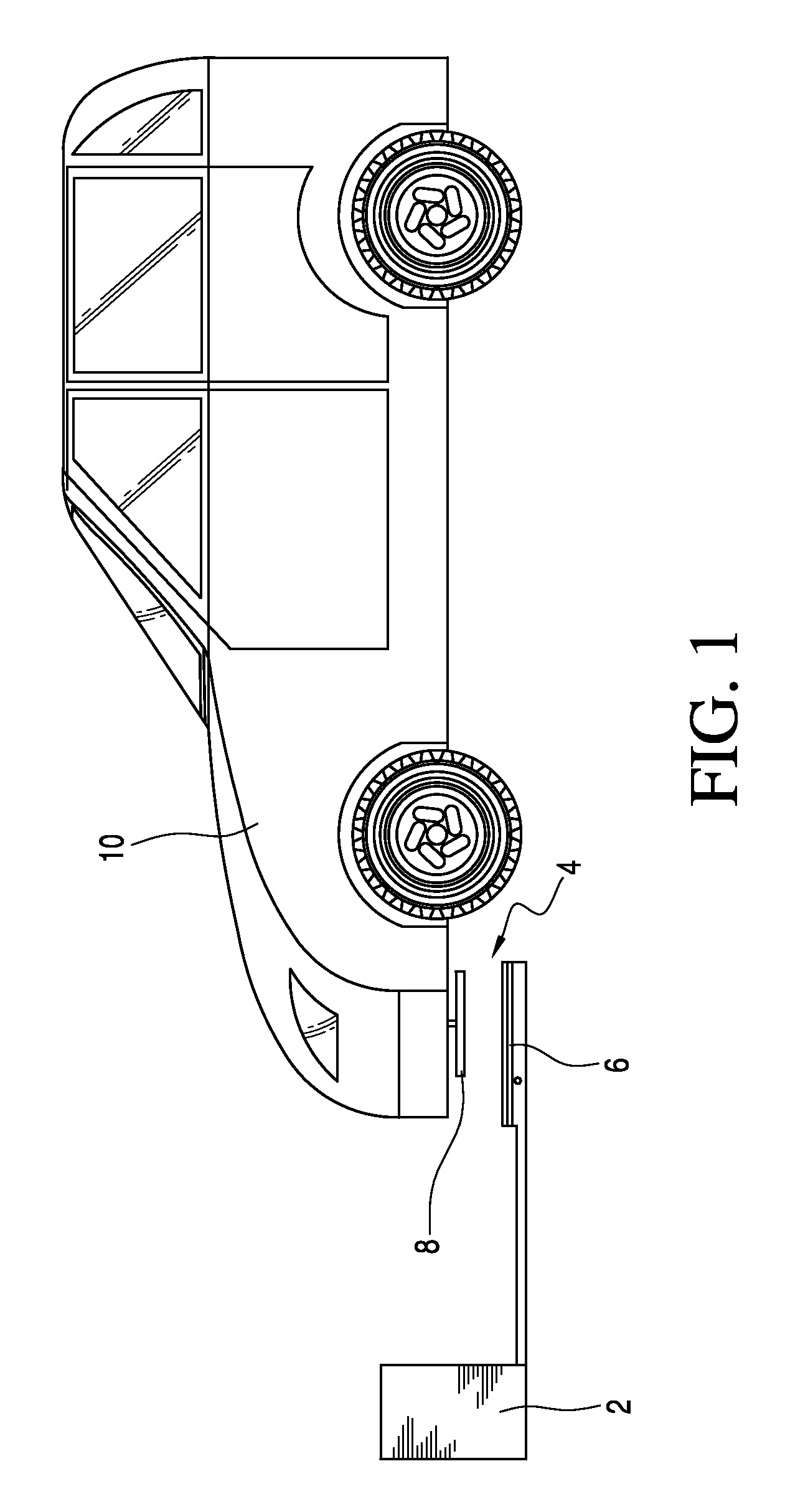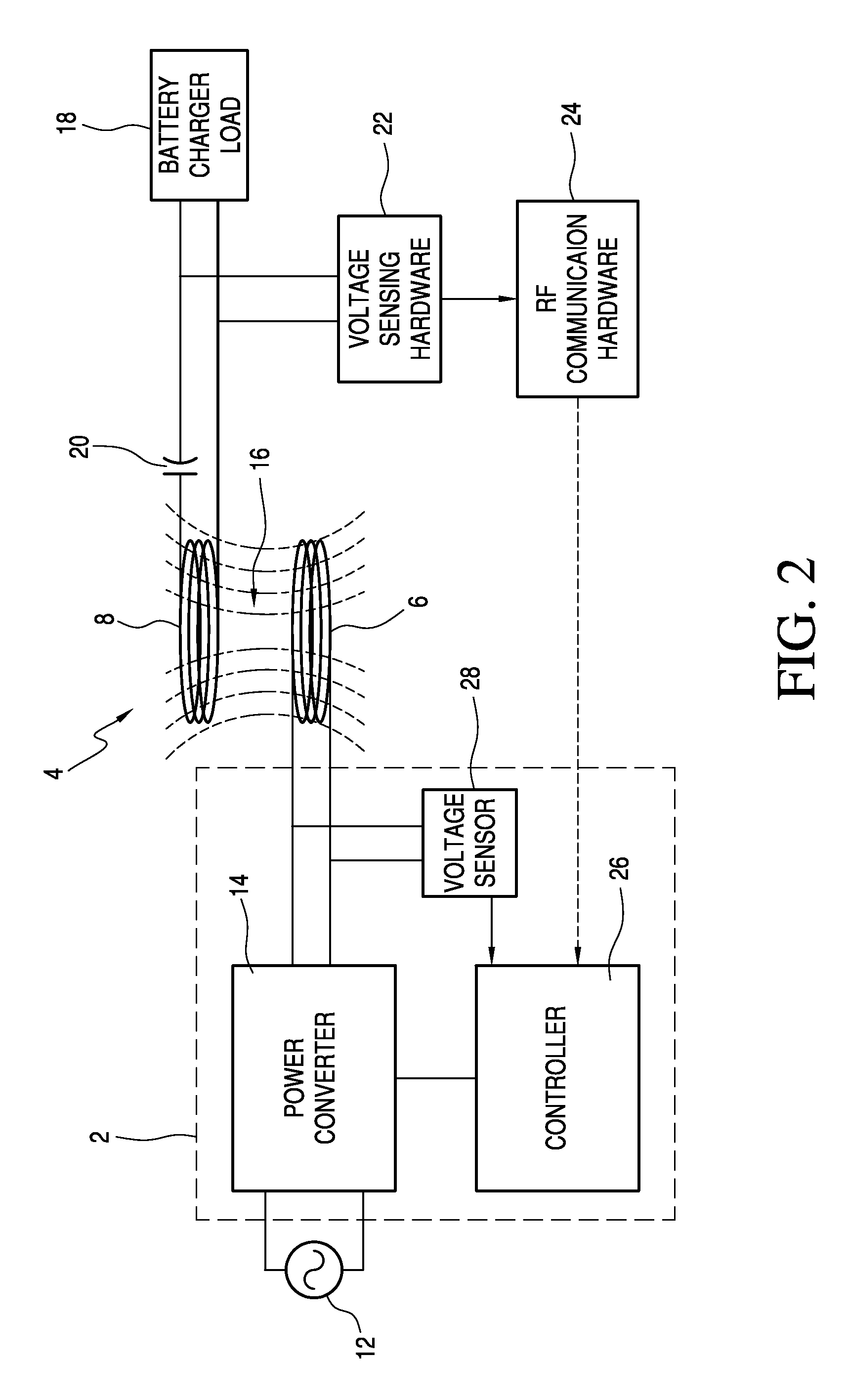Method and apparatus for inductively transferring ac power between a charging unit and a vehicle
a charging unit and inductive transfer technology, applied in the direction of charging stations, electric vehicle charging technology, transportation and packaging, etc., can solve the problems of inability to achieve the optimal alignment of the vehicle with the charging station, insufficient compensation of inefficiency, etc., and achieve the effect of maximizing the power transfer efficiency
- Summary
- Abstract
- Description
- Claims
- Application Information
AI Technical Summary
Benefits of technology
Problems solved by technology
Method used
Image
Examples
Embodiment Construction
[0013]Referring first to FIG. 1, the inductive charging system according to the invention will be described. The system includes a charging station 2 and transformer 4. The transformer includes a stationary primary coil 6 which is preferably mounted on the ground such as the floor of a garage. The primary coil is connected with the charging station. The transformer further includes a secondary coil 8 which is mounted on a vehicle 10. The secondary coil is mounted at a location on the vehicle so that the vehicle can be positioned adjacent to the charging station with the secondary coil above the primary coil as shown. Preferably, the coils are arranged with their axes in alignment for maximum energy transfer. However, because axial alignment is imprecise, the inductive charging system according to the invention is designed to adjust the charging station to maximize energy transfer.
[0014]The inductive charging system according to the invention will be described in greater detail with ...
PUM
 Login to View More
Login to View More Abstract
Description
Claims
Application Information
 Login to View More
Login to View More - R&D
- Intellectual Property
- Life Sciences
- Materials
- Tech Scout
- Unparalleled Data Quality
- Higher Quality Content
- 60% Fewer Hallucinations
Browse by: Latest US Patents, China's latest patents, Technical Efficacy Thesaurus, Application Domain, Technology Topic, Popular Technical Reports.
© 2025 PatSnap. All rights reserved.Legal|Privacy policy|Modern Slavery Act Transparency Statement|Sitemap|About US| Contact US: help@patsnap.com



